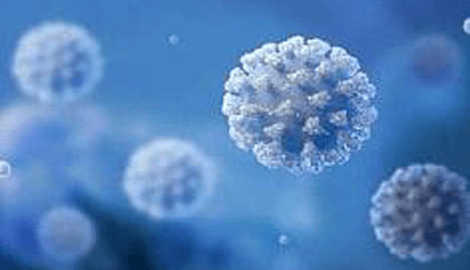HISAT, StringTie and Ballgown(一)

今天给大家分享一下nature protocol上8月11号刚发的转录组分析新流程HISAT, StringTie and Ballgown(查看原文可以看到)。至此tophat-cufflinks可以说拜拜了。
首先了解一下几个工具作用;
HISAT:比对工具了,类似于昨天讲的tophat2;
Stringtie:组装与定量工具。
Ballgown:为差异表达计算工具
主要流程图
具体步骤
1、创建index
首先利用下面脚本提取剪接信息(有参考GFF前提下,没有忽略此步):
$ extract_splice_sites.py chrX_data/genes/chrX.gtf >chrX.ss
$ extract_exons.py chrX_data/genes/chrX.gtf >chrX.exon
然后构建HISAT2 index:
$ hisat2-build --ss chrX.ss --exon chrX.exon chrX_data/genome/chrX.fa chrX_tran
The --ss and --exon options(没有步可以不写)。indexing requires 9 GB of RAM for chromosome X and 160 GB for the whole human genome. The amount of memory is much smaller if one omits annotation information. Indexing chromosome X using one CPU core takes <10 min. It should take ~2 h to build an index for the whole human genome using eight CPU cores.
2、开始比对
各样本分别比对参考基因组
$ hisat2 -p 8 --dta -x chrX_data/indexes/chrX_tran -1
chrX_data/samples/ERR188044_chrX_1.fastq.gz -2
chrX_data/samples/ERR188044_chrX_2.fastq.gz -S ERR188044_chrX.sam
$ hisat2 -p 8 --dta -x chrX_data/indexes/chrX_tran -1
chrX_data/samples/ERR188104_chrX_1.fastq.gz -2
chrX_data/samples/ERR188104_chrX_2.fastq.gz -S ERR188104_chrX.sam
将SAM 转换为BAM:
$ samtools sort -@ 8 -o ERR188044_chrX.bam ERR188044_chrX.sam
$ samtools sort -@ 8 -o ERR188104_chrX.bam ERR188104_chrX.sam
3、组装转录本
$ stringtie -p 8 -G chrX_data/genes/chrX.gtf -o
ERR188044_chrX.gtf –l ERR188044 ERR188044_chrX.bam
$ stringtie -p 8 -G chrX_data/genes/chrX.gtf -o
ERR188104_chrX.gtf –l ERR188104 ERR188104_chrX.bam
4、合并各个样本
$ stringtie --merge -p 8 -G chrX_data/genes/chrX.gtf -o stringtie_merged.gtf
chrX_data/mergelist.txt
chrX_data/mergelist.txt:各个gtf路径放在里面。
5、估计表达丰度
$ stringtie –e –B -p 8 -G stringtie_merged.gtf -o
ballgown/ERR188044/ERR188044_chrX.gtf ERR188044_chrX.bam
$ stringtie –e –B -p 8 -G stringtie_merged.gtf -o
ballgown/ERR188104/ERR188104_chrX.gtf ERR188104_chrX.bam
6、加载 Ballgown R包
$ R
R version 3.2.2 (2015-08-14) -- "Fire Safety"
Copyright (C) 2015 The R Foundation for Statistical Computing
Platform: x86_64-apple-darwin13.4.0 (64-bit)
>library(ballgown)
>library(RSkittleBrewer)
>library(genefilter)
>library(dplyr)
>library(devtools)
7、 加载表型数据.
An example file called geuvadis_phenodata.csv is included with the data files for this protocol (ChrX_data). In general, you will have to create this file yourself. It contains information about your RNA-seq samples, formatted as illustrated in this csv (comma-separated values) file.
>pheno_data = read.csv("geuvadis_phenodata.csv")
8、加载表达丰度文件其来源于stingtie
To do this, we use the ballgown command with the following three parameters: the directory in which the data are stored (dataDir, which here is named simply ‘Ballgown’), a pattern that appears in
the sample names (samplePattern) and the phenotypic information that we loaded in the previous step (pData). Note that once a Ballgown object is created, any other Bioconductor32 package can be applied for data analysis
or data visualization.
>bg_chrX = ballgown(dataDir = "ballgown", samplePattern = "ERR", pData=pheno_data)
9、过滤低表达基因。
>bg_chrX_filt = subset(bg_chrX,"rowVars(texpr(bg_chrX)) >1",genomesubset=TRUE)
10、鉴定差异转录本
>results_transcripts = stattest(bg_chrX_filt,feature="transcript",covariate="sex",adjustvars =c("population"), getFC=TRUE, meas="FPKM")
11、鉴定差异基因
>results_genes = stattest(bg_chrX_filt, feature="gene",covariate="sex", adjustvars = c("population"), getFC=TRUE,meas="FPKM")
后面还有一些步骤,欢迎关注微信号,明天继续!
欢迎关注
更多实验咨询关注